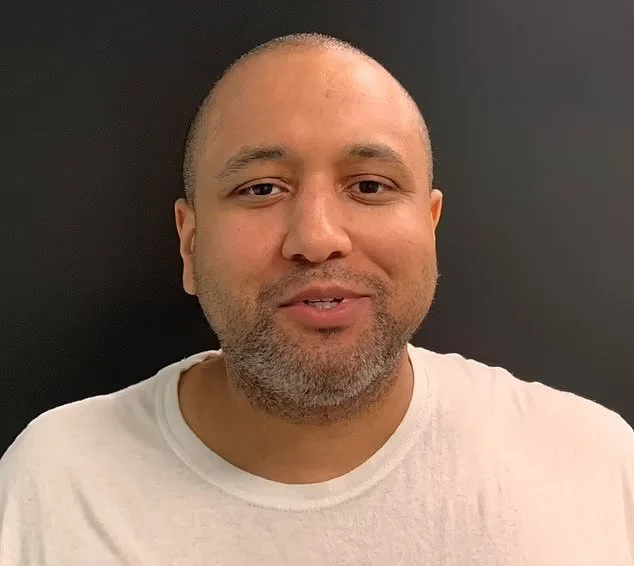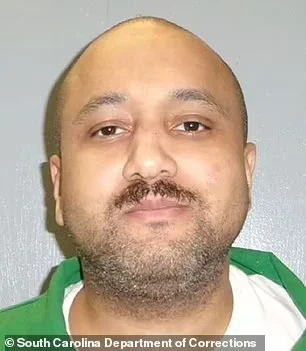The postmortem findings of a de@th row convict who opted for firing squad point to a less-than-ideal execution. Two days later, Mikal Mahdi—who was found guilty of a fatal crime spree in Winston-Salem, North Carolina—sentenced de@th for killing 56-year-old off-duty police officer James Myers and 29-year-old convenience store clerk Christopher Jason Boggs in South Carolina.

According to his attorney, his execution was botched and he died in excruciating pain Credit: DailyMail.com
Then twenty-one year old Mahdi shot Myers eight times before trying to burn his body. Mahdi, 42, was executed on April 11, at the Broad River Correctional Institution, following almost twenty years on de@th row.
Mahdi’s legal team clarified that he decided to be put dead by firing squad since he thought it would be a faster and less painful way than lethal injection or electrocution. But the result of the execution begs issues about whether it really occurred as planned.

In the following 45 seconds, he groaned and breathed for around 80 seconds before taking his last breath Credit: ASSOCIATED PRESS
A separate autopsy found that the three shooters hired to k!ll Mikal Mahdi most likely missed his heart and hit him above the abdomen, hurting his liver and pancreas. Even though three shooters were supposed to carry out the k!lling, Mahdi was only hurt twice by the bullets.
According to court records filed with the Supreme Court on May 8, Mahdi’s de@th was much longer and more painful than the expected “10 to 15 seconds.” Mahdi cried out after being shot, and people said they could still hear him breathing and fighting for air for at least a minute afterward.

Credit: SuppliedDailyMail.com
Mahdi was not formally declared dead for four minutes; his lawyers found that he most likely lost consciousness between thirty to sixty seconds, two to four times longer than what would have been expected from a gunshot.
“The shooters missed the intended target area,” pathologist hired by Mahdi’s legal team said, “and the evidence suggests he was struck by only two bullets instead of the prescribed three.” Mahdi most certainly experienced extreme pain from “air hunger,” according to Dr. Arden, as his lungs battled to expand against his shattered ribs and sternum, causing a smothering sensation from a lack of oxygen.

One of Mahdi’s lawyers, David Weiss, said, “The autopsy verifies what I saw and heard. Mikal passed away in great agony. Though nothing about his execution was compassionate, we are unsure what went wrong.” For anyone who might meet Mikal’s destiny, the consequences are horrific. Mahdi’s lawyers said, “South Carolina’s denial of the shortcomings in their execution process cannot continue.”

His attorneys blamed his crimes on a difficult childhood in his appeal Credit: Family of Mikal Mahdi
They contend the execution was “botched” either because the mark on Mahdi’s chest was not correctly placed or because the jail fire squad missed the target. This independent autopsy report tracks a previous autopsy from the South Carolina Corrections Department, which claimed three bullets hit Mahdi, with two striking the same area on his torso.
But Mahdi’s lawyers discounted the state’s autopsy as “incredibly sparse,” pointing out it included significantly less information and images than usual in such situations. Pointing out the lack of X-rays and close-up images of Mahdi’s body and clothes, they contend that there is no conclusive proof to back the assertion that two bullets penetrated the same region.

The body of Myers was burned after he was shot nine times.
The lawyers said in their letter to the court, “Mr. Mahdi elected the firing squad, and this Court sanctioned it, based on the assumption that the South Carolina Department of Corrections (SCDC) could be trusted to carry out its basic tasks: locating the heart, placing a target over it, and hitting that target. Obviously, confidence was unfounded.
Over forty-year-experienced pathologist Dr. Jonathan Arden also weighed in, saying he had never seen two bullets striking the exact same location on a human body during his whole career.
